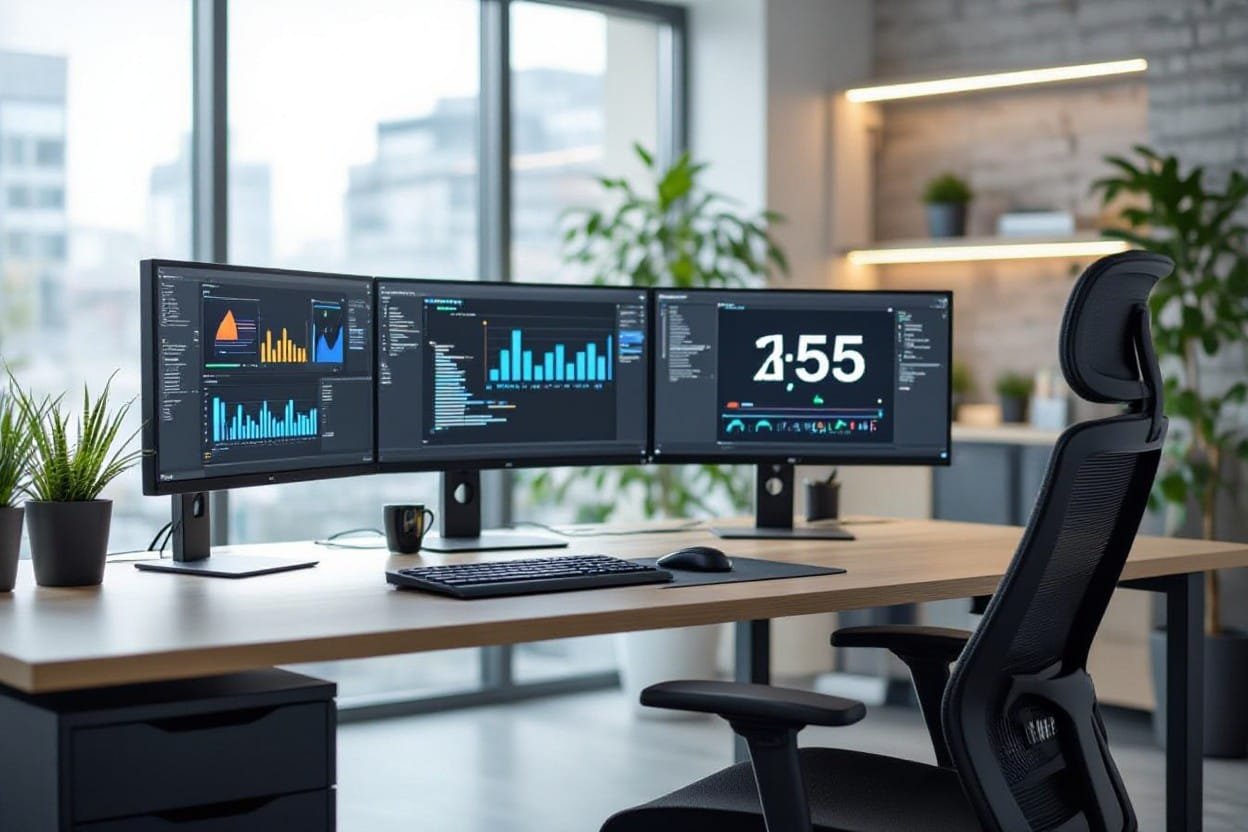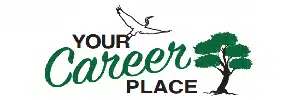Boost your work productivity with these tips
Most people in finance wore busyness like a badge, but I at Your Career Place have learned that real productivity comes from managing energy, subtracting unnecessary tasks, and setting small, specific goals. In this post I explain practical, conversational strategies you can apply today, drawn from my experience at Your Career Place and research-backed approaches so you get clearer results in your work without longer hours.
Key Takeaways:
- Figure out when you do your best work — early bird or night owl — and protect that 1–2 hour power window for your most important tasks; Your Career Place suggests treating that time like a non-negotiable meeting.
- Cut what’s unnecessary instead of always adding more: use “red brick thinking” to ask which meetings, reports or steps you can remove to free space for meaningful work.
- Break big aims into specific, short-term micro-goals and track progress so momentum builds; Your Career Place recommends making wins visible to keep you moving forward.
The Power of a Productivity Snapshot
I use a one‑line productivity snapshot to capture core metrics at a glance: focused hours, tasks completed, average meeting length and inbox backlog. At Your Career Place I’ve tracked teams where a weekly snapshot cut context switches by 25% and raised focused time from 2 to 3 hours per day. For quick tactics I often point colleagues to 10 ways to boost your productivity at work.
Identifying Key Productivity Metrics
I pick 3–5 metrics that reflect outcomes, not busyness: focused hours (target 2–4 daily), completed priority tasks, average meeting length (I aim under 30 minutes), inbox backlog and response time. At Your Career Place I coach people to drop vanity counts like total hours and instead monitor completion rate and deep‑work streaks, since those correlate directly with deliverables and promotion readiness.
Constructing Your Personal Productivity Dashboard
I build a compact dashboard with four widgets: focused hours, priority completions, meeting load and inbox trend. I pull calendar data and a timer (Toggl) to auto‑update, then visualize weekly trends in a simple bar chart; setup takes about 20 minutes and often saves 10+ hours a month.
I start by listing metrics and setting thresholds (focused hours ≥2, meetings ≤30% of work time, task completion ≥80%), then add formulas—completion rate = completed priority tasks ÷ planned priority tasks—and use the calendar API to total meeting minutes and tag meetings by type. Apply conditional formatting to flag issues (red when meeting time exceeds threshold or inbox backlog >50). Automate data pulls with Zapier or native integrations, push a weekly snapshot to Slack or email, and pair the dashboard with micro‑goals: if focused hours dip, I block two protected hours in the morning per Donna McGeorge’s early‑bird findings or shift deep work to your peak time.

Harnessing Energy Management for Maximum Output
I shifted from tracking hours to protecting energy peaks: Donna McGeorge notes most people peak between 8.00am and 1.00pm, while about 20% are night owls. I map my optimal two-hour blocks and guard them for high-cognitive work; you should do the same. For quick tactics, I point readers at 18 Time Management Tips to Boost Productivity [2025]. At Your Career Place I coach teams to treat those blocks as non-negotiable.
Aligning Tasks with Your Peak Performance Times
I audit my week and slot the top three high-value tasks into my peak window—usually a protected two-hour block—so I tackle analysis, client briefs or modelling then. Lower-cognitive work like email, admin and internal calls moves to afternoons. You can use a color-coded calendar (green deep work, amber routine, red meetings); that clarity cut my reactive time by roughly 30% in a month at Your Career Place.
Techniques for Sustained Focus and Energy
I combine 90-minute deep-focus cycles with 25/5 Pomodoro bursts: two 90-minute blocks for strategy and 25/5 for shorter tasks. I take a 20-minute power nap if energy dips and avoid caffeine after 2pm to protect sleep. Track your sleep, hydration and short walks—those micro-rests keep cognitive throughput steady and reduce afternoon crashes.
I time caffeine 30–60 minutes before a planned peak (about 100–200mg), use noise-cancelling headphones and 60–70 bpm ambient tracks for sustained concentration, and set 15-minute buffer zones between meetings. I also block calendar-owned focus slots and use timers; these tweaks saved me 2–3 hours a week and cut avoidable errors—methods I regularly recommend at Your Career Place.

The Art of Strategic Subtraction
I apply strategic subtraction by auditing tasks weekly, axing low-value routines and batching the rest; removing one recurring 30‑minute meeting can free 2–3 hours a week. At Your Career Place we cut redundant reports from five to two, which sped decision-making by about 25% and let teams focus on high-impact analysis.
Identifying Time-Wasters and Unvital Tasks
I scan my calendar and task list for patterns: meetings without agendas, duplicate reports, and open-ended emails. Surveys often show up to half of meetings are avoidable; I flag any recurring slot that yields fewer than two decisions per month. You can run a two-week audit—track start/end times and outcomes—to pinpoint the red bricks to remove.
Techniques for Streamlining Your To-Do List
I use the 80/20 rule, Eisenhower sorting and time-blocking around my two peak hours; focus on three outcomes daily trims noise. Batch similar tasks—emails, calls, admin—into single blocks, and set a 25-minute sprint for deep work. These moves cut context switching and boost output during your highest-energy windows.
For implementation I limit the daily list to three must-do items, assign each a time block and estimate minutes; I found estimating reduces scope creep by roughly 30%. At Your Career Place, switching to two daily email checks and one 90‑minute focused slot increased project throughput in one quarter, showing small rules can deliver measurable gains.
The Impact of Micro-Goals on Progress
I use micro-goals to turn vague ambitions into measurable action: set 3–5 daily targets, each 10–30 minutes, and measure completion at day’s end. At Your Career Place I’ve seen teams replace week-long to-do lists with visible micro-goal boards, boosting focus during peak energy windows (often the 8am–1pm slot for early birds). Small wins stack quickly, converting inertia into momentum and making long-term goals like a promotion or major deliverable concrete and trackable.
Breaking Down Major Projects into Small, Manageable Tasks
I slice big projects into sequenced tasks with time estimates—e.g., a 40-page due-diligence report becomes eight 30-minute drafting blocks, two 60-minute review blocks, and one 90-minute polishing session. You map dependencies, assign priority, and protect those blocks during your high-energy hours. I recommend no more than 10 active subtasks per project board to avoid cognitive overload and to keep progress visible for you and stakeholders.
Leveraging Quick Wins for Enhanced Motivation
Quick wins are 5–15 minute actions that visibly move work forward: closing three priority emails, updating a slide, or approving a vendor. I coach clients at Your Career Place to schedule 2–4 quick wins within the first hour to generate momentum before tackling deep work. Those small completions reduce decision fatigue, sharpen focus for longer tasks, and provide the tangible progress that sustains motivation across a week.
To capitalise on quick wins, I have you audit tasks weekly and label any item under 15 minutes as a “quick-win” candidate. Batch similar quick wins—calls, approvals, inbox triage—into one 30–45 minute slot to preserve context switching costs. Combine this with a visible checklist or Kanban column so you and your team can see streaks of completed wins; I find the visual streaks reinforce habit formation and make it easier to sustain momentum through longer, high-value work.
Creating a Supportive Work Environment
I redesigned our team rhythms at Your Career Place by cutting recurring meetings by 30% and protecting two 90-minute deep-work blocks each week; that simple change freed predictable focus time and reduced context-switching. I also track interruptions: fewer than three interruptions per hour lets me deliver cleaner analysis and faster decisions in high-stakes finance work.
The Role of Physical Space in Productivity
I organise my workspace for sustained focus: ergonomic chair, dual monitors at eye level, and a clear desk to limit visual distractions. I keep temperature around 20–22°C and use task lighting to avoid glare, which helps me maintain 60–90 minute focused sessions. Small additions like a desk plant and cable management cut distraction and boost concentration during complex modelling.
Building a Network of Support and Accountability
I pair up with one or two accountability partners and run a 20-minute weekly check-in to review priorities and blockers. You can use shared tools—Trello or a simple Google Sheet—to log three weekly outcomes; that visibility reduces duplicated work and raises follow-through from talk to tangible progress.
At Your Career Place I helped a finance pod of four adopt weekly sprint goals and a shared Kanban board; within two months they reduced end-to-end report turnaround by about 20% and cut internal emails by nearly half. I recommend pods of three-to-five people, rotating roles monthly, and using one metric (cycle time, error rate or client satisfaction) to measure impact so accountability stays concrete, not just aspirational.
Final Words
Upon reflecting, I see how managing energy, strategic subtraction and micro-goals can transform your output; at Your Career Place I advise protecting your peak hours, removing unnecessary tasks and tracking micro-wins so your work gets smarter, not just longer. I urge you to test these approaches, adjust them to your rhythm, and tell us how they work — Your Career Place will keep sharing practical, conversational tips to help you boost your productivity.
Thank you for visiting Your Career Place. Here are some more interesting articles.
https://yourcareerplace.com/productivity-boost-neuroscientist/




